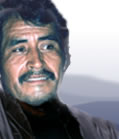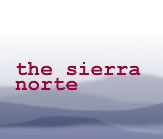 |
 |
||
 |
|||
|
GLOSSARY Mexico glossary |
transcript |
| Section 1 | We would like to know, Don Otilio, about your work here in the community. Since when have you been comisariado [de bienes comunales] (official responsible for community property)? Well I was appointed on October 25th 1998, by the asamblea general (community parliament) in the community, to the job of comisariado de bienes comunales. |
How did your nomination happen? My nomination involved a process of three options: the one with the majority of votes was like the “proprietor”, and the one who followed – with less votes – was the deputy comisariado. |
|
How many people were nominated to the community property office? Well, in the comisariado de bienes comunales (office responsible for community property) we are eight: the president and the deputies, the secretary with his deputy, the treasurer and his deputy, and two assistants. |
|
What are the functions of the comisariado? Well, my functions are mostly to watch the forest area and the documentation of the transportation of timber; and to see that all workers act responsibly to avoid any accident in the different areas. |
|
This role that you have, is it focused on the forest? What activities does it refer to? Yes, mostly to forest exploitation, reforestation, control of materials – that is, the wood, brazuelo (thin tree trunks, used to make charcoal), charcoal – and the careful management of them. |
|
Has the community been using charcoal for a long time? That was the main work of the community, even before the use of the wood. |
|
And this charcoal, what is it made of? Oak. |
|
Is it a difficult process? Yes, very delicate, and you have to know how to do it, because if the person doesn’t know how then all the wood can be spoiled. |
|
| Section 2 | All the wood - in what sense? If one is not careful to protect what is in the oven… what is it called?… if there is a leak in the terracería (charcoal oven), just to give an example, it may let air in, and the logs can start burning up. It is not good if they are burn too much. |
Were many people were involved in this [work]? It was small scale. As I say; not everyone knew how to do that work. |
|
Was it an important part of the community? Mostly it was in the agencias (community offices) where there were older people, who knew the job perfectly. |
|
Where did you sell the product? In Oaxaca. They transported it on animals. At that time, transport was a little problematic, because we didn’t have vehicles. |
|
And when did you start the other part of the forest development, the business of timber? This began to expand in 1957 when the company FAPATUX (Tuxtepec paper mills) enlarged the forest area and all the comuneros (registered community members) knew different branches of the job and this was when clarification of all the different jobs occurred. |
|
Do you now have some type of organisation for improving this activity? Yes, mostly we the authorities are responsible for all the developments, and agreements are made in the asamblea general (community parliament). |
|
Is it like a communal business? Well yes, exactly. |
|
When did you consolidate this business? The communal enterprise was initiated in 1984, when the community took all the forest development into its own hands. |
|
Earlier on, in what way did was the the community take part in forest activities? How did the comuneros (registered community members) take part…well back then, there was no documentation of the forest, for example. We are talking about 1955 and before... Each person worked on a small scale, because, as I said before, they transported [the wood] on animals. |
|
It was too much work, took too much time! Did you have any established place for the sale of your products? Well, mostly the city of Oaxaca, that was the only place where we sold the products. |
|
What is the difference between then and now, how has this activity improved? Well, now the city is much more open and all the communities too, since they now have different jobs, and all that [they make] goes to the city of Oaxaca. |
|
| Section 3 | Now what other projects do you have besides the wood? Well, there is for example the [cultivating/collecting of] shiitake mushrooms, white mushrooms. In Yuvilia there is the chocolate factory. Here in El Punto they have the manufacture of molinillo (wooden whisk for making chocolate drink), spoons – these little enterprises. |
Do you have any support projects for these activities? As for the group [that makes] chocolate …the group [that grows] shiitake mushrooms, it’s getting organised. They have some projects plans for the expansion of their products. |
|
Is the shiitake mushroom wild or do you cultivate it? Yes, they cultivate it; the wild mushroom is the white mushroom. |
|
Where does it grow, throughout the Ixtepeji territory? No, some parts only - here in the Yuvilia area and the area of El Punto. Those parts are where the product is developed. |
|
How do you manage it? Do you have any rules for its exploitation? Well mostly there are organised groups and we, the community property group, we set up a meeting with the buyer, the product is presented and everything is included in the price. |
|
Which market is the product sold at? Well, here it’s Oaxaca market, but [from there?] it is sent to Japan. |
|
What wild forest products other than wood do you use from here in the community? For example, el heno blanco (literally, white hay), el heno amarillo (literally, yellow hay), laurel, poleo (“pennyroyal”, wild mint with medicinal use) and, well, those are the ones used in this Christmas period. |
|
Is it during the Christmas festivities that you use them most, or are there other times too? There are two times - Holy Week and December. |
|
How do you regulate the exploitation of these resources? Well, by means of documentation. |
|
Does each person of the community have to come and report? Each person has an application form and they answer the questions to get the right to use the resource. |
|
Approximately how much volume do you produce? Of the heno amarillo about 16 tons in the Christmas season; and the heno blanco - about 20 tons approximately. |
|
Are there natural resources which are protected? The zone that’s the nature conservation area, that’s a protected zone. |
|
| Section 4 | How do you decide to make a nature conservation area? Well, mostly we have the idea of protecting the area … because of the water below the surface… and to avoid participating in exploitation of the forest, and in order to take care of the forest and the ecology of the place. |
Are there any activities that can be developed in the nature conservation area? Yes, possibly. But particularly the ecotourism project, which is focused – as it were -on protecting the area, and keeping it in a good condition for any visitor in accordance with the current state of the area. |
|
With that ecotourism project, would you say that the visitors can give back some resources to the community? Yes, that’s right. |
|
What do the people of Ixtepeji think about the idea of creating an ecotourism project? Well, it’s a long term thing, since [at the moment] it’s a new project for us and we don’t yet know the form it will take. But we are taking steps to understand it in stages; we are starting with the support of the asamblea general (community parliament), to take the project further. |
|
Do you have any rules for the activities of the ecotourism project in the nature conservation area? Not yet, there isn’t any formal rule because we are still getting to become familiar with the project, maybe later, possibly we [will] have a more developed project. |
|
How is the administration of the nature conservation area done? Is it federal, communal or what form does it take? It is communal. |
|
In your view, which is the best way to administrate this area? Well, I think the best way is the communal way, because it’s accessible to everyone in the general society. |
|
Is it traditional practices and customs that determine which people are in charge of communal goods? Yes, [the positions] come from traditional practices and customs. |
|
What other activities do you do, besides being the president of the comisariado de buenes comunales? Well, the little we get to know is the documentation, to work with honesty, look after the finances, and give the results of this work to society generally. |
|
Is this a job that requires a lot of time? Well, in the three years we have been doing it to the best of our ability, it has not been easy because we lack capacity (resources?), but we are here in part because it is one of the comuneros’ (registered community members) obligations. |